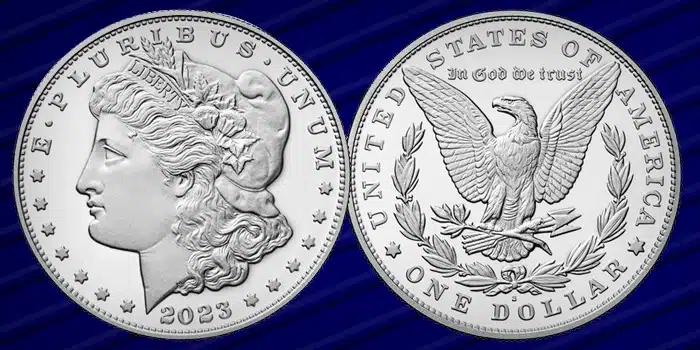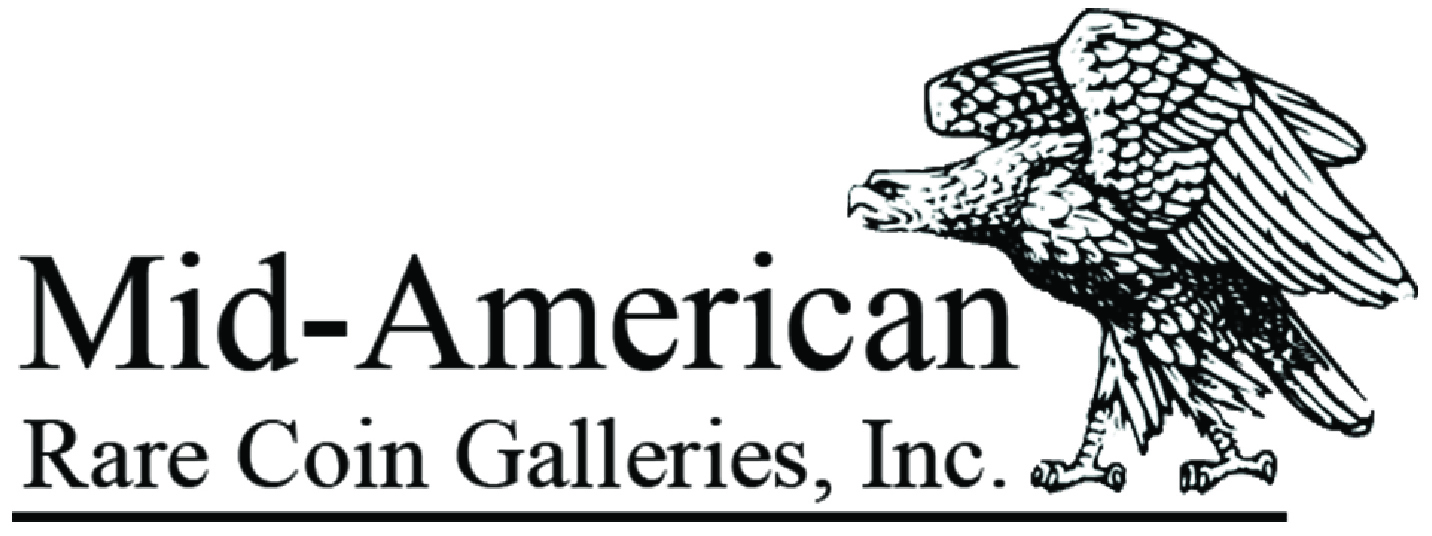The United States Mint strikes more than 10 billion circulating coins each year. By any measure, that’s a lot of coins, and most of them are not going to be worth much anytime soon. The staggering mintages for these circulating issues far exceed any collector demand.
On the other hand, many coins that the U.S. Mint produces for collectors are made in far fewer numbers. Some of the First Spouse $10 gold bullion coins, struck from 2007 to 2020, saw mintage figures as low as 2,100 coins, but these issues are not in strong demand from collectors and sell for modest premiums above their melt value.
The six different issues of the extremely popular 2021 Morgan and Peace Dollars were produced with mintages of about 175,000 coins. Because of the strong collector demand, the coins sell for well above the issue price–some for 10 times the original issue price. The combination of low mintages, coupled with broad collector demand, created one of the most successful new issues that the Mint has produced in years.

Later this year, the U.S. Mint will resume this popular series with the production of 2023-dated Morgan and Peace Dollars. The mintages are being increased to satisfy demand. The estimated mintages are as follows:
- 2023-P Morgan Dollar – Uncirculated mintage limit: 275,000
- 2023-S Morgan Dollar – Proof mintage limit: 400,000
- 2023-S Morgan Dollar – Reverse Proof mintage limit: 250,000
- 2023-P Peace Dollar – Uncirculated mintage limit: 275,000
- 2023-S Peace Dollar – Proof mintage limit: 400,000
- 2023-S Peace Dollar – Reverse Proof mintage limit: 250,000
Only time will tell if the increased mintage for these popular modern coins will limit their upside potential to increase in value like the 2021 issues. The 2023 Reverse Proof coins should be stunning and will be exciting to see once released.
Even with increased mintages, each type of 2023 Morgan and Peace Dollars will still have a lower mintage than the 484,000 1909-S VDB Lincoln Cents that were produced. Lincoln Cents and Morgan Silver Dollars are two of the most popular coins with collectors.
Many collectors start with Lincoln Cents and work their way toward other, more challenging series. In the 1960s, my first collecting adventure was trying to complete a set of 1941-to-date Lincoln Cents. A lot of collectors and dealers of my generation started this exact same way. The 2021 release of Morgan and Peace Dollars stimulated an increase in demand for the vintage 1878-1935 editions. A lot of new collectors were introduced to these iconic issues and prices surged. Hopefully, the 2023 release will create another wave of new buyers.
Many people wonder if the increased mintages for the 2023 Morgan and Peace Dollars will impact demand and prices. These questions and others make for a great time to explore the subject of modern coin mintage figures more carefully.
Mintage figures are the number of coins produced each year by the United States Mint. The Mint has kept records of coinage production since the first coins were struck in 1793 for general circulation. Unfortunately, these mintage numbers can be misleading, as dies from previous years were often used until they became worn or broken. This explains why the U.S. Mint recorded 19,570 1804 Silver Dollars as being struck, yet none are known to have been struck that year. All examples were made at a later date for presentation or for collectors. Undoubtedly, the 19,570 coins were all struck from 1803 Silver Dollar dies.
Mintage figures are also only the number of coins struck and have nothing to do with how many have survived. Many early gold coins have substantial mintage figures but are very rare today. The amount of gold in these coins was reduced in 1834, and gold coins struck before that were melted.

I was able to witness this firsthand, examining thousands of gold coins discovered from the shipwreck of SS Central America several years ago. Of the thousands of gold coins in the hoard that were lost in 1857, not a single coin dated before 1834 was among the group. Many other coins with large mintages are considered great rarities today because of mass melting in the past. The famous 1933 Double Eagle is a great example: 445,500 were struck and only 13 to 15 are known to exist today.
The mintage for early Proof coins is not exact, as these were made for collectors as needed. The final number struck was also not added to the year-end production numbers. The mintage figures for many early Proof United States issues are based on guesswork, gleaned from the number of known examples. Today, the U.S. Mint keeps exact mintage figures for modern Proof coins and collectors eagerly track this information.
When doing research on mintage figures for this article–and not just for modern coins–I consulted with the one person who spends more time on this subject than anyone — my longtime mentor, Ken Bressett. Ken is the Editor Emeritus of A Guide Book of United States Coins (the Red Book). The Red Book is the “go-to source” for mintage figures. The editors (including myself) take the subject very seriously and make every effort to obtain the most accurate information possible.
Ken relayed the following information to me about the subject:
There seems to have been very little interest in mentioning the quantities of coins made by the U.S. Mint prior to the 1930s. Mint records for all issues from 1793 and on were preserved but they did not always accurately reflect the quantities made for each date on the coins. The earliest Mint records bulletin that I have is from 1951. I do not know if there are any earlier than that. This is titled: Domestic Coin Manufactured by Mints of the United States. Since Organization to Include the Year 1950. Later, Mint Reports reproduce the same charts shown in this publication.
As unusual as this may sound to today’s coin collectors, the Mint letters on coins were barely understood prior to 1892 and not necessarily of any special interest to collectors and dealers before publication of The Coinage of the United States Branch Mints by A. G. Heaton in 1893.
I have not found any auction catalogs, price lists or other mention of quantities of coins issued in any source prior to 1936. The most popular early source for mintage information was in the Wayte Raymond coin catalogues that were issued from 1937 to 1957, where he reproduced the identical charts shown in the Mint Reports. However, Raymond was not the first to make use of this information. These charts are difficult to use because of their scattered grouping of coins by Mint, and quantities expressed in total dollars, rather than actual numbers made.
As near as I can determine, credit for sorting things out and issuing a handy and usable listing goes to Charles E. Green, a prominent Chicago coin dealer in the 1930s. In 1936, Green issued the Mint Record and Type Table of United States Coins. In this book, which was issued and updated in several subsequent years, adjusted mintage figures were shown adjacent to each coin listed by date and mint. It is interesting to note that the Wayte Raymond publications did not begin listing mintage figures until the year following the Green Record Book.
Equally interesting is the fact that early issues of the Whitman Guide Book of United States Coins listed the Green mintage figures in a separate section at the back of the book rather than adjacent to each coin listing. And that Green was a prime contributor to the original Blue Book and Red Book. It was not until the 16th edition in 1963 that the mintage figures in the Red Book were moved to the body of the book beside each coin. Incidentally, I was the assistant editor at that time and made the adjustments. From that time on, several research helpers have provided information derived from Mint records to refine and clarify many of the numbers in Red Book listings.
In general, mintage figures do matter, but they don’t tell the whole story about a coin’s rarity and its desirability. The above-mentioned 1909-S VDB has a low mintage for the series (484,000), but many were saved, as these were a first year of issue. In spite of the coin’s high survival rate, the coins are expensive and very popular. The 1909-S VDB is considered the “key” to the series and is highly sought-after by beginners and advanced collectors.
The 2021 and 2023 Morgan and Peace Dollars have a lower mintage figure, but none of these modern collector coins will be lost to circulation. Actual published mintage figures only tell part of the story.
In recent years, there has been a great deal of interest in the mintage for modern coins produced by the U.S. Mint. Some new issues have extremely low production numbers, but if a coin fails to be popular with collectors at the time of issue, it may end up being very valuable much later. The 1995-W Proof Silver Eagle is a great example.
Mintage figures are an area of numismatics that can be complicated, but well worth exploring to become a more successful collector.
